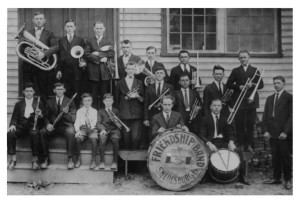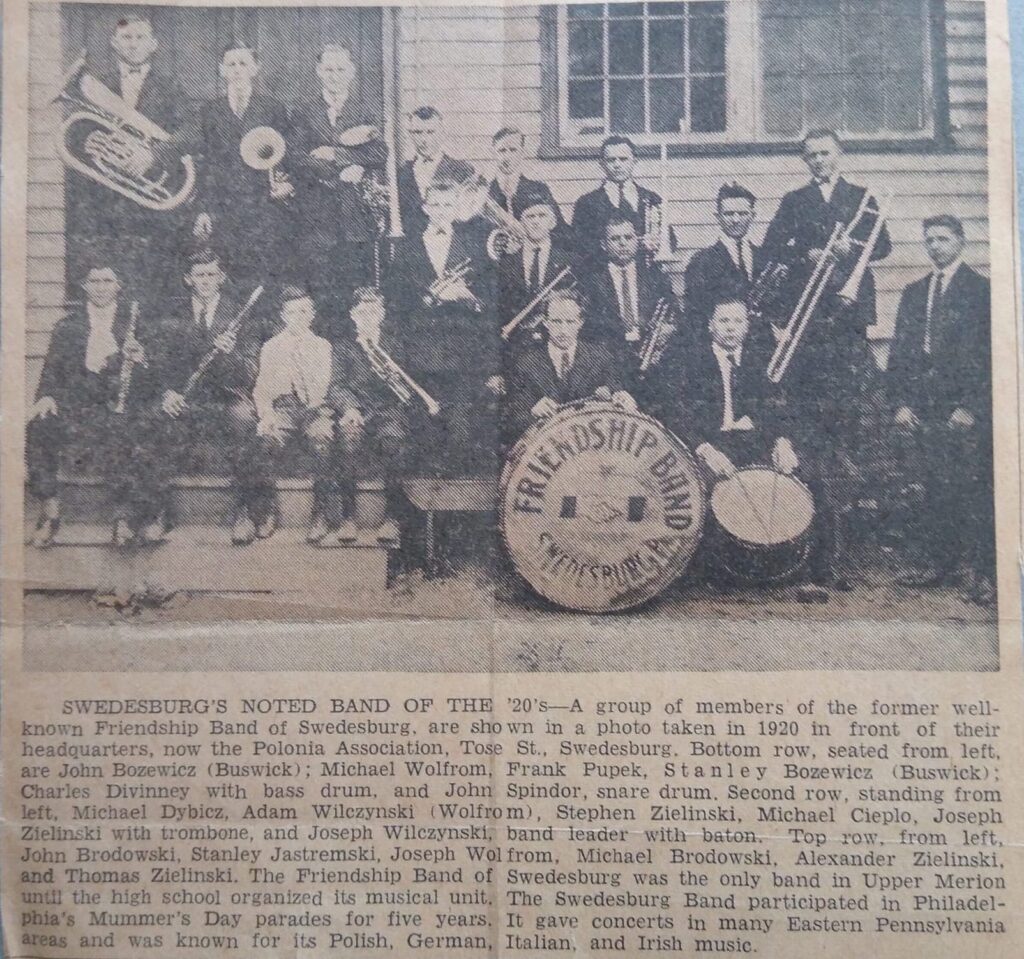The original 13 colonies stretched along the east coast from Massachusetts (then including Maine) to Georgia.
Most of the early settlers were English, but the colonists also included people from Scotland, Ireland, Germany, Holland, Sweden and France.
Although they brought many of the traditions of their homeland, the observances often turned out different from anything they had known in the past.
Records kept by the Holstein family, early Swedish settlers of Upper Merion, indicate that the Swedes, and in later years, the German and Swedes welcomed in the New Year with mumming. The Upper Merion Swedes called it “Fantasticals.”
Hands of masked, costumed men paraded in the village streets and went house to house acting out short plays or reciting verses.
In return, the revelers were offered coins or something to eat or drink.
In later years, as immigrants from European countries settled in this area, New Year’s Eve became more festive and active with music, dancing, and singing.
Some of these immigrants observed New Year’s Eve as St. Sylvester’s Day. Celebrations escalated to costumed parades and fireworks . For many, however, New Year’s Eve and Day have become a religious observance. Many denominations hold special services to thank God for the preceding year.
. For many, however, New Year’s Eve and Day have become a religious observance. Many denominations hold special services to thank God for the preceding year.
During the 1920’s, the Friendship Band of Swedesburg participated in Philadelphia’s Mummers parades. Because the band could play German, Polish, Irish and Italian music, it received much praise along the parade route.
From the Tuesday, December 30, 1997, King of Prussia Courier article, New Year’s Observed by Early Upper Merion Settlers, by Ed Dybicz, Correspondent

We thank Huck Laffredo for his FaceBook comment and copy of the 1920 photo with caption. “My two uncle’s are in the front row, the first person on the left is my Uncle Charles Buswick and the fourth person from the left is my Uncle Stanley Buswick they are my Mother’s brothers, this picture was taken at the Polonia Hall that use to be on Tose Street in Swedesburg the building is now a three unit condo.”
